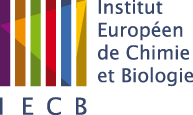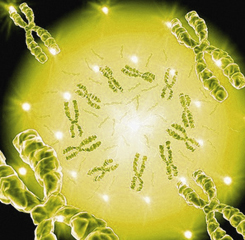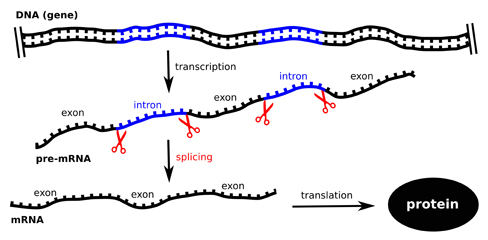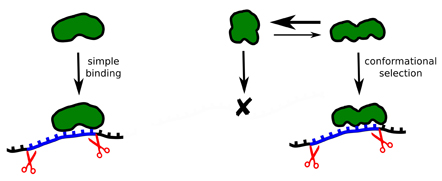| How can one gene code for several proteins? New elements published in Nature |
|
Over 100 000 genes in wheat and only 30 000 in humans… Since 2003, genome sequencing has produced perplexing results, which are compelling biologists to focus on splicing, a process which can explain why advanced organisms such as humans contain a limited number of genes. IECB group leader Cameron Mackereth, together with colleagues from Spain and Germany, has now discovered how the human U2AF protein enables this process. The results were published online on July 13th in Nature.
Splicing requires the cooperation of different proteins, or splicing factors. One such splicing factor, U2AF, was examined by Dr Cameron Mackereth from IECB (Inserm U869/Université Bordeaux Segalen), together with colleagues from the Helmholtz Zentrum München and the Technical University of Munich (TUM), the European Molecular Biology Laboratory (EMBL) in Heidelberg and the Centre for Genomic Regulation in Barcelona. They found that the spatial structure of the U2AF protein alternates between a closed conformation that is inactive, and an open active form that triggers intron removal. Intron sequences vary in their ability to selectively bind and stabilize the active conformation, thus resulting in diverse patterns of intron elimination, and an increase in the number of different proteins made by a single gene. Disruption of this key process in splicing may be involved in many diseases, including cancer. The scientists also presume that a similar shape-shifting mechanism plays an important role in the regulation of many other signal pathways in the cell.
|
2, Rue Robert Escarpit - 33607 PESSAC - France
Tel. : +33 (5) 40 00 30 38 - Fax. : +33 (5) 40 00 30 68







